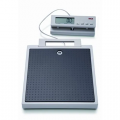Hello
I will develop an electronic product that can read the amount of snow/m2 on a house roof. Have intended to use a laser that is fixed in a stable place in the attic. on the truss thing there is a mirror on which the laser beams shine. when the tact chair bends, the laser senses it and should then be able to convert the deflection into kg/sq.m. the data obtained should be sent to an app that the owner can read. everything must happen in real time.
How to build such a product in the best way? I'm not that well versed in electronics but maybe someone can help me along the way.
Best regards
// Jojjo
I will develop an electronic product that can read the amount of snow/m2 on a house roof. Have intended to use a laser that is fixed in a stable place in the attic. on the truss thing there is a mirror on which the laser beams shine. when the tact chair bends, the laser senses it and should then be able to convert the deflection into kg/sq.m. the data obtained should be sent to an app that the owner can read. everything must happen in real time.
How to build such a product in the best way? I'm not that well versed in electronics but maybe someone can help me along the way.
Best regards
// Jojjo












